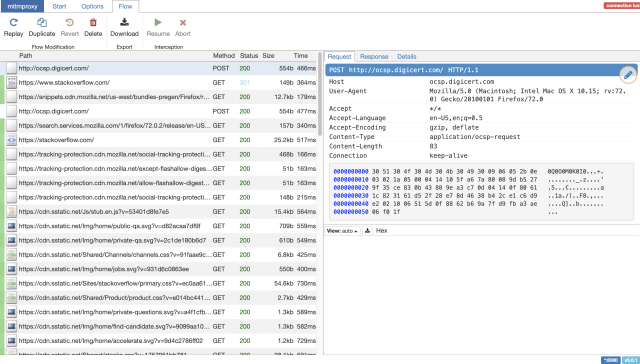

- INJECTING AN IFRAME USING PYTHON MITMPROXY HOW TO
- INJECTING AN IFRAME USING PYTHON MITMPROXY CODE
- INJECTING AN IFRAME USING PYTHON MITMPROXY PASSWORD
INJECTING AN IFRAME USING PYTHON MITMPROXY HOW TO
I’ll show how to identify this vulnerability both manually and using Snyk.
INJECTING AN IFRAME USING PYTHON MITMPROXY CODE
The source leaks that it’s using SpringBoot, and have a vulnerable library in use that allows me to get remote code execution. Inject has a website with a file read vulnerability that allows me to read the source code for the site.

In Beyond Root, I’ll look at pulling the Python source code from the application, even though I didn’t need that to solve the box.Ĭtf htb-inject hackthebox nmap ubuntu file-read directory-traversal tomcat feroxbuster burp-repeater burp spring-cloud-function-spel-injection java java-sprint maven snyk spring-cloud-function-web cve-2022-22963 command-injection brace-expansion ansible pspy ansible-playbook That user is able to run the PyInstaller build process as root, and I’ll abuse that to read files, and get a shell.
INJECTING AN IFRAME USING PYTHON MITMPROXY PASSWORD
I’ll find a SQLite injection over the websocket and leak a password and username that can be used for SSH. I’ll download both the Linux and Windows application, and through dynamic analysis, see web socket connections to the box. Socket has a web application for a company that makes a QRcode encoding / decoding software. In Beyond Root, I’ll debug the webassembly in Chromium dev tools.Ĭtf hackthebox htb-socket nmap ffuf qrcode python ubuntu flask websocket python-websockets pyinstaller burp burp-proxy burp-repeater burp-repeater-websocket websocket-sqli username-anarchy crackmapexec pyinstaller-spec pyinstxtractor pycdc htb-forgot htb-absolute

To get root, I’ll exploit openmediavault’s RPC, showing three different ways - adding an SSH key for root, creating a cron, and installing a Debian package. I’ll pivot uses using creds from the database. From there, I’ll use the administrator’s browser session to read an admin page with a file read vulnerability where I can get the page source, and abuse an open injection in Ruby (just like in Perl) to get execution. The general user input is relatively locked down as far as cross site scripting, but I’ll find a buffer overflow in the webassembly that puts the username on the page and use that to get a XSS payload overwriting the unfiltered date string. I’m able to create notes, and to flag notes for review by an admin. However, I also want to change the onclick method for the form submission button, but am running into some issues.Ctf hackthebox htb-derailed nmap ruby rails debian ffuf idor xss wasm webassembly javascript bof wasm-bof pattern-create command-injection cors chatgpt python file-read open-injection open-injection-ruby openmediavault sqlite git hashcat chisel deb deb-package youtubeĭerailed starts with a Ruby on Rails web notes application. Var amountInput = iframeDocument.getElementById("transaction_amount") ĪtAttribute("value", "100")

I was easily able to populate one of the form fields using: var iframe = document.getElementById('my_iframe') I do not have access to modify the "source", but do have access to inject code via Google Tag Manager. I am working with a page which includes an iframe containing a form.


 0 kommentar(er)
0 kommentar(er)
